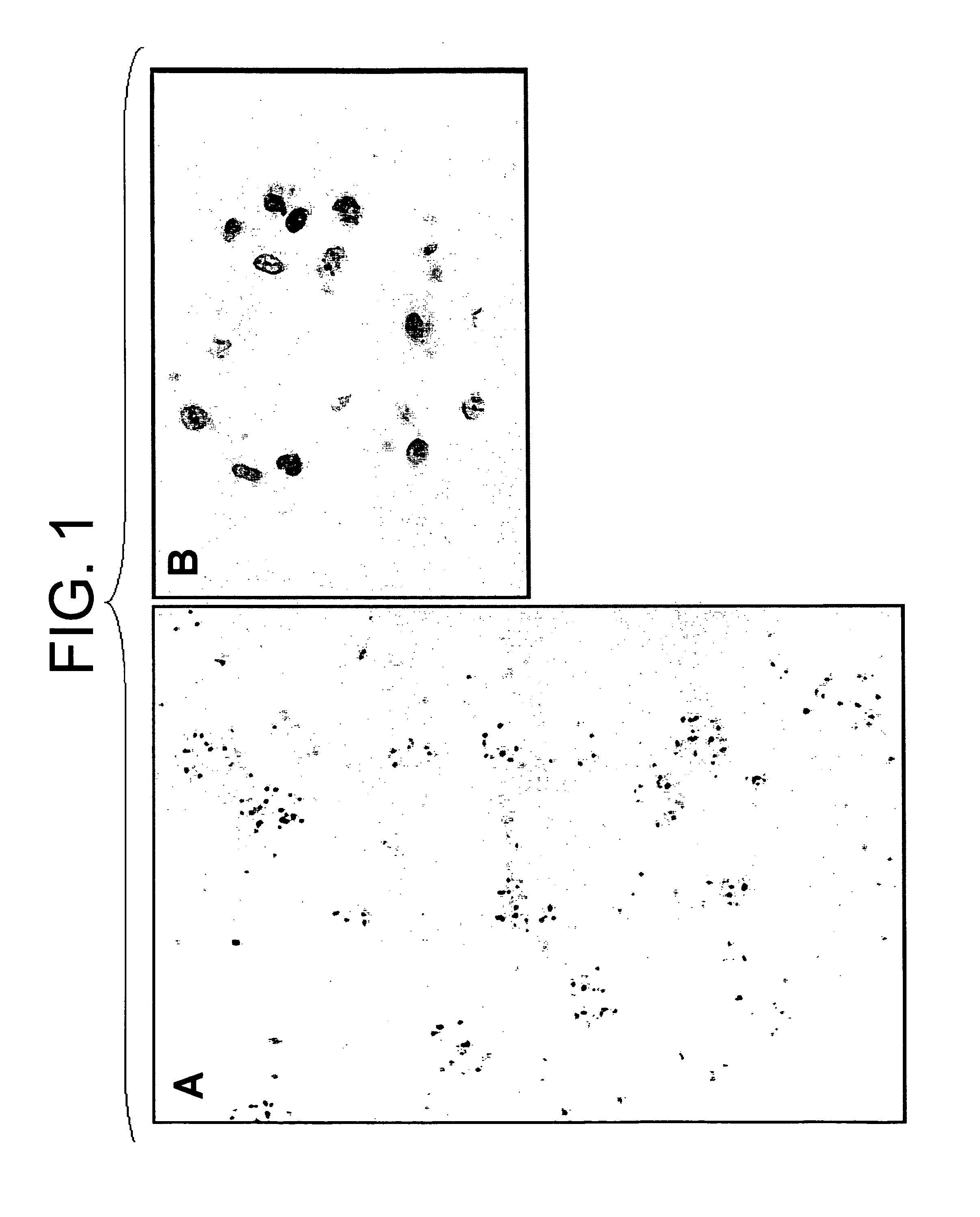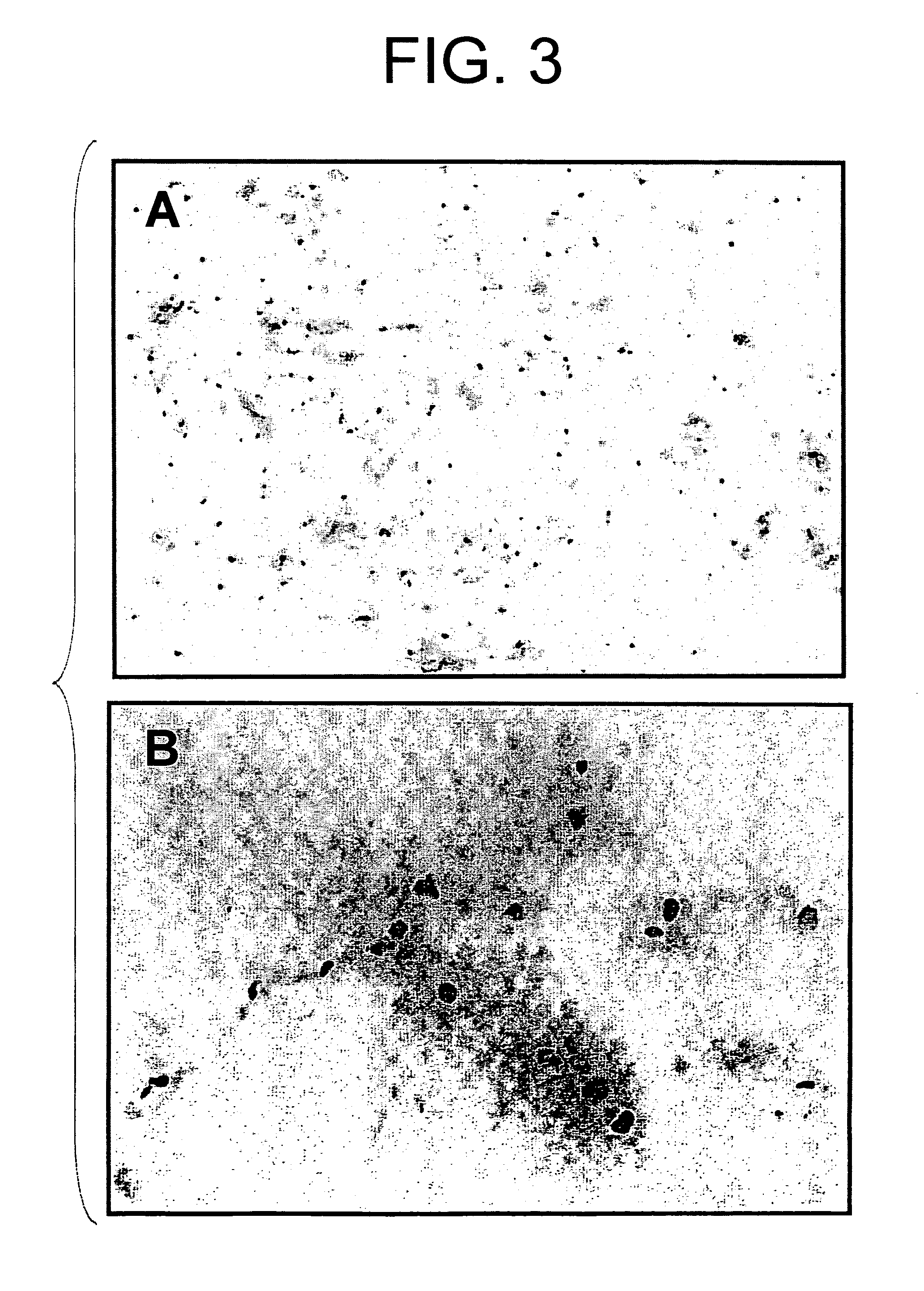Method of gene transfer via vascular system or ureter
a technology of ureter and vascular system, applied in the direction of prosthesis, peptide/protein ingredients, immunological disorders, etc., can solve the problems of prolonged ischemia, chronic rejection, and shortened ischemia, and achieve the effect of reducing adverse effects and advantageous in cos
- Summary
- Abstract
- Description
- Claims
- Application Information
AI Technical Summary
Benefits of technology
Problems solved by technology
Method used
Image
Examples
example 1
Introduction of FITC-Labeled Oligo DNA into Rat Kidney (1)
[0065]A twelve base pair oligo DNA fluorescently labeled with FITC at the 5′-terminus (5′-FITC-CGAGGGCGGCATGGG-3′; SEQ ID NO: 1) was dissolved in buffer (137 mM NaCl, 5.4 mM KCl, 10 mM Tris-HCl [pH 7.6]; hereinafter abbreviated as “BSS”) at a concentration of 50 μg / 500 μl for gene transfer. Sprague Dawley (hereinafter abbreviated as “SD”) rat (6-week-old male) was anesthetized by intraperitoneal administration of pentobarbital (50 mg / kg). After dissection of the abdomen, a kidney was exposed and a 24 G catheter (Terumo Corporation) was inserted into the renal artery for perfusion of the kidney with physiological saline and the oligo DNA described above was injected. Immediately after the injection of the oligo DNA, the renal vein was ligated with a clip. The kidney introduced with the DNA was nipped with the forceps-type electrodes to conduct gene transfer by electroporation applying a square-shaped voltage (75 V, 100 millise...
example 2
Introduction of FITC-Labeled Oligo DNA into Rat Kidney (2)
[0066]A twelve base pair oligo DNA fluorescently labeled with FITC at the 5′-terminus (5′-FITC-CGAGGGCGGCATGGG-3′; SEQ ID NO: 1) was dissolved in BSS at a concentration of 50 μg / 500 μl for gene transfer. SD rat (6-week-old male) was anesthetized by intraperitoneal administration of pentobarbital (50 mg / kg). After abdominal dissection, the left kidney and left ureter were exposed, a 30 G needle (Terumo Corporation) was inserted into the ureter, and the renal artery and vein were clamped with clips to inject the above-described oligo DNA into the kidney. The kidney introduced with the DNA was nipped with forceps-type electrodes to perform gene transfer by electroporation applying a square-shaped voltage (75 V, 100 milliseconds) six times with intervals of 900 milliseconds. Ten minutes after the gene transfer, the kidney was removed and observed under a fluorescent microscope. As shown in FIG. 3, the FITC-labeled oligo DNA was i...
example 3
Introduction of Luciferase Gene into Rat Kidney (1)
[0067]An expression vector carrying a latent infection machinery of EB virus inserted with a luciferase gene was constructed. The expression vector was dissolved in BSS at a concentration of 200 μg / 500 μl for gene transfer. SD rats (6-week-old males) were anesthetized by intraperitoneal administration of pentobarbital (50 mg / kg). After abdominal dissection, kidneys were exposed and 24 G catheter was inserted into the renal artery for perfusion of the kidneys with physiological saline and the above-described expression vector was injected. Immediately after the injection of the expression vector, the renal vein was ligated with a clip. The kidneys introduced with the gene were nipped with forceps-type electrodes to perform gene transfer by electroporation applying a square-shaped voltage (25, 50, 75 or 100 V, 100 milliseconds) six times with intervals of 900 milliseconds. The catheter was removed after the gene transfer, and the punc...
PUM
| Property | Measurement | Unit |
|---|---|---|
| voltage | aaaaa | aaaaa |
| voltage | aaaaa | aaaaa |
| voltage | aaaaa | aaaaa |
Abstract
Description
Claims
Application Information
 Login to View More
Login to View More - R&D
- Intellectual Property
- Life Sciences
- Materials
- Tech Scout
- Unparalleled Data Quality
- Higher Quality Content
- 60% Fewer Hallucinations
Browse by: Latest US Patents, China's latest patents, Technical Efficacy Thesaurus, Application Domain, Technology Topic, Popular Technical Reports.
© 2025 PatSnap. All rights reserved.Legal|Privacy policy|Modern Slavery Act Transparency Statement|Sitemap|About US| Contact US: help@patsnap.com



